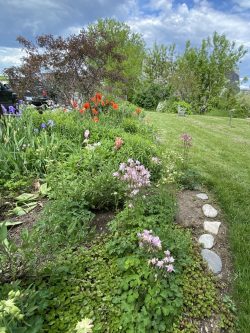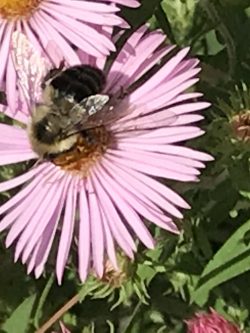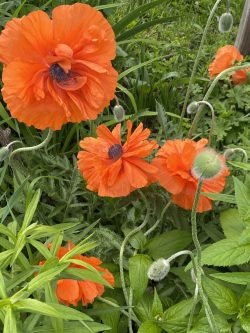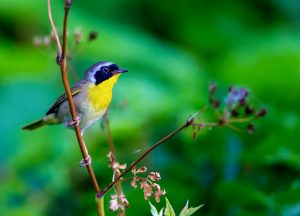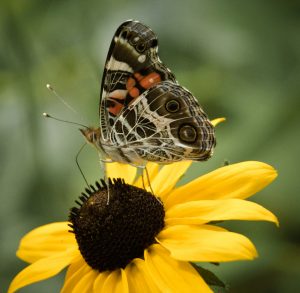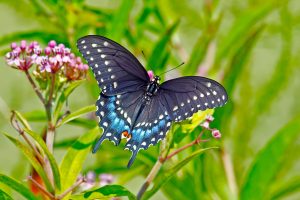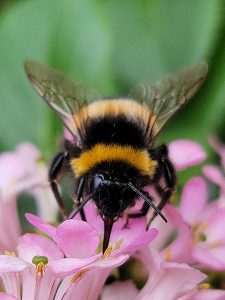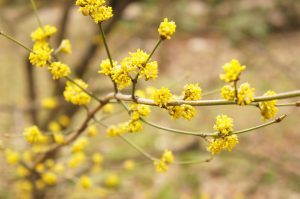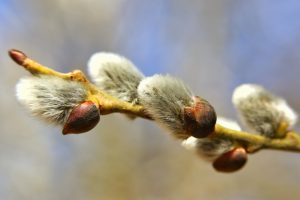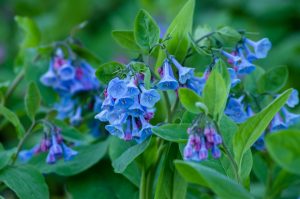A small park with Harbor views and beautifully kept gardens, located at 3 Park Drive. The gardens are the work of long-time volunteer Susan Beebe, who has filled them with native vegetation designed to attract birds and pollinators.
Below is a list of Plants, Birds, and Pollinators that may be found in the park:
Birds nesting in or near Park
- Song sparrow Melospiza melodia
- Gray Catbird Dumatella carolinensis
- Northern Mockingbird Mimus polyglottos
- Yellow warbler Dendroica petechia
- House finch Carpodacus mexicanus
- Birds visiting Park to forage and use birdbath
- Ruby-throated Hummingbird Archilochis colubris
- Blue Jay Cyanocitta cristata
- American Goldfinch Spinus tristis
- American Robin Turdus migratorius
- Common Yellowthroat Geothlyptis trichas
- Belted Kingfisher Megaceryle alcyon
- Mourning dove Zenaida macroura
- Rock Pigeon Columbia Livia
Butterflies and Moths known to reproduce in Park
(This means their host plants are present.)
- Polyphemus moth (giant silk moth)Anthera polyphemus
- Cecropia moth (giant silk moth)Hyalophora cecropia
- Monarch butterfly Danaus plexipus
- American lady butterfly Vanessa virginiensis
- Isabella moth (Wooly bear caterpillar) Jsia Isabella
Butterflies and Moths visiting Park to nectar
- Red Admiral butterfly Vanessa atalanta
- Painted Lady butterfly Vanessa cardui
- Black swallowtail butterfly Papilio polyxenes
- Tiger swallowtail butterfly Papilio glaucus
- Snowberry clearwing moth Hemaris diffinis
Bees and other Pollinators visiting and/or nesting in Park
- Bumble bees Bombus sp. (Very likely nest in Park.)
- European honey bees Apis mellifera
- Leaf cutter bees Megachile sp.
- Long-horned bees Melissodes sp.
- Green sweat bees Agapostemon sp.
- Hover or syrphid flies Sphaerophoria philanthus
Native Shrubs Planted and Benefits to Wildlife
- Spicebush Lindera benzoin – Host plant for Spicebush Swallowtail butterfly
- Flowering Raspberry Rubus odorata – Flowers feed native bees and honeybees
- Red Raspberry Rubusideaus – Berries feed 50 species of songbirds
- Black Raspberry Rubus occidentalis – As above
- Black Chokeberry Aronia arbutifolia – Fruits eaten by 12 species of birds
- Virginia rose Rosa virginiana – Flowers feed native bees, hips eaten by birds
- Bayberry Myrica pensylvanica – Berries feed tree swallows, yellow-rumped warblers
- Serviceberry Amelanchier canadensis – Flowers feed native bees, berries feed birds
- Snowberry Symphoricarpus albus – Host plant for Snowberry and Hummingbird Clearwing moth
Native Trees, Shrubs, and Vines Already Present in 2010
- Box elder Acer negundo – Seeds are the preferred winter food of evening grosbeaks and purple finches
- Pussy willow Salix spp – Earliest to bloom, feeds emerging Queen bumble bees
- Staghom sumac Rhus typhina Winter – persisting berries feed robins, and at least 21 other species of birds
- Virginia creeper Parthenocissus quinquefolia – Berries feed 35 species of birds
Native Herbaceous Plants Planted and Benefits to Wildlife
- Goldenrod Solidago spp – Top herbaceous plant in New England for biodiversity, feeds dozens of species of bees, butterflies, and other beneficial insects
- New England aster Symphotrichum novae-angliae – Host plant for Crescent and Buckeye butterflies, feeds migrating monarch butterflies and many species of bees, including Queen bumble bees preparing for hibernation
- Milkweed Asclepias syrica – Host plant for monarch caterpillars, feeds a whole community of insect species
- Culver’s root Veronicastrum spp – Feeds native bees and honeybees
- Howell’s pussytoes Antennaria howelli – Host plant for American Lady butterfly caterpillars
- Wild strawberry Fragaria spp. – Feeds native bees, berries feed birds
- Violets Viola spp – Host plant for Fritillary butterfly caterpillars
- Solomon’s seal Polygonatum bifolium – Flowers feed hummingbirds, bees
- Virginia bluebells Mertensia virginica – Blooms early spring, feeds emerging Queen bumble bees
- Bloodroot Sanguinaria canadensis As above
- Jacob’s ladder Polemonium reptans – As above
- Wild ginger Asarum canadensis – As above
- Obedient plant Physostegia virginiana – Feeds native bees and honeybees
- Christmas fem Polystichum acrosticoides – Helps control erosion
- Turtlehead Che/one glabra – Host plant for Baltimore checkerspot butterfly caterpillar

